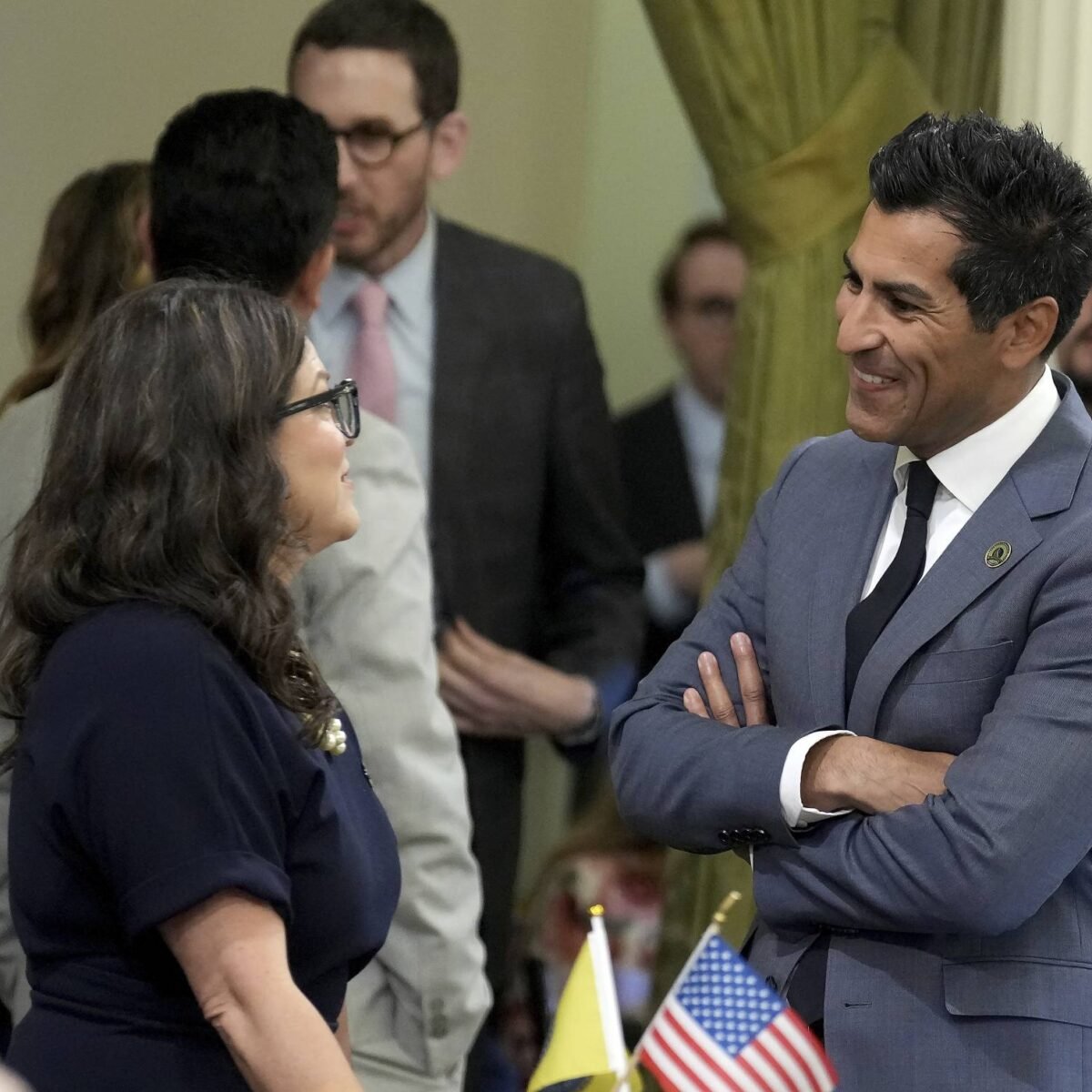Cap and trade has increased gas costs by about 26 cents per gallon, according to a February report from the Independent Emissions Market Advisory Committee, a group of experts that analyzes the program. It has played “a very small role” in increasing electricity prices because the state’s grid isn’t very carbon intensive, the report says.
Lawmakers and lobbyists criticized the governor and legislative leaders for rushing the deal through with little public input.
Ben Golombek, executive vice president of the California Chamber of Commerce, said at a hearing this week that the Legislature should have taken more time “to do this right.”
Democratic state Sen. Caroline Menjivar said it shouldn’t be par for the course for lawmakers to jam through bills without the opportunity for amendments.
“We’re expected to vote on it,” she said of Democrats. “If not, you’re seen to not be part of the team or not want to be a team player.”
Menjivar ultimately voted to advance the bill out of committee.
Energy affordability and fuel supply
The cap-and-trade bills are part of a sweeping package aimed at advancing the state’s energy transition and lowering costs for Californians.
One of the bills would speed up permitting for oil production in Kern County, which proponents have hailed as a necessary response to planned refinery closures and critics have blasted as a threat to air quality.
Another would increase requirements for air monitoring in areas overburdened by pollution and codify a bureau within the Justice Department created in 2018 to protect communities from environmental injustices.
The state could refill a fund that covers the cost of wildfire damage when utility equipment sparks a blaze. The bill would set up public financing to build electric utility projects.
Lawmakers will also vote on a measure allowing the state’s grid operator to partner with a regional group to manage power markets in western states. The bill aims to improve grid reliability. It would save ratepayers money because California would sell power to other states when it generates more than it needs and buy cheaper energy from out of state when necessary, the governor’s office said.





